Heat Very hot | Origin Africa Scoville scale 125,000–325,000 SHU | |
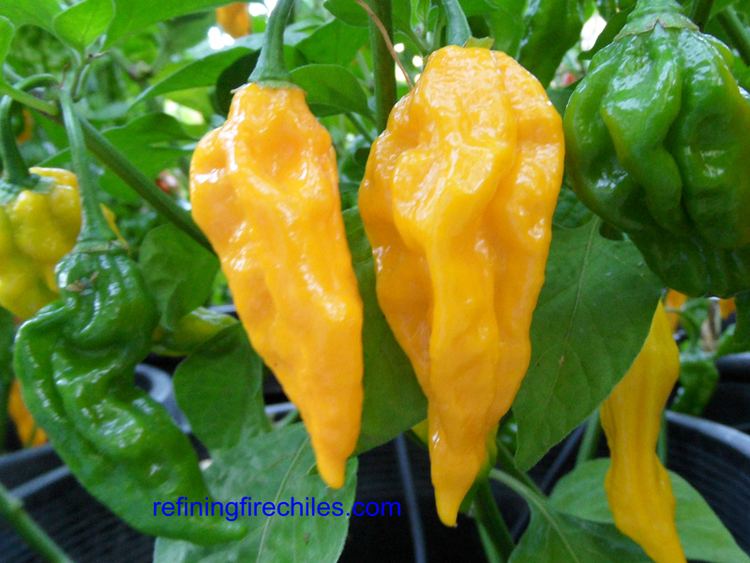 | ||
Scientific name Capsicum chinense 'Fatalii' Similar Naga Morich, Trinidad moruga scorpion, Red Savina pepper, Capsicum chinense, Lemon drop pepper | ||
Fatalii
The Fatalii is a cultivar of the chilli pepper Capsicum chinense developed in southern or central Africa from chilies introduced from the Americas. It is described as having a fruity, citrus flavor with a searing heat comparable to the habanero, to which it is related and from which it may have derived.
Contents
- Fatalii
- The fatalii pod review from refining fire chiles
- History
- Cultivation
- Raw Chilli Taste
- Culinary Use
- References
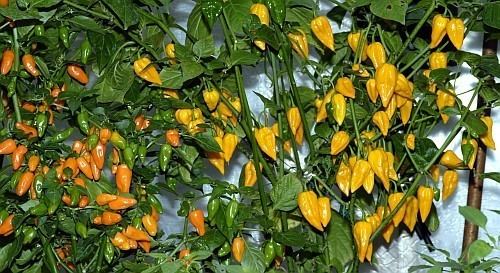
The fatalii pod review from refining fire chiles
History
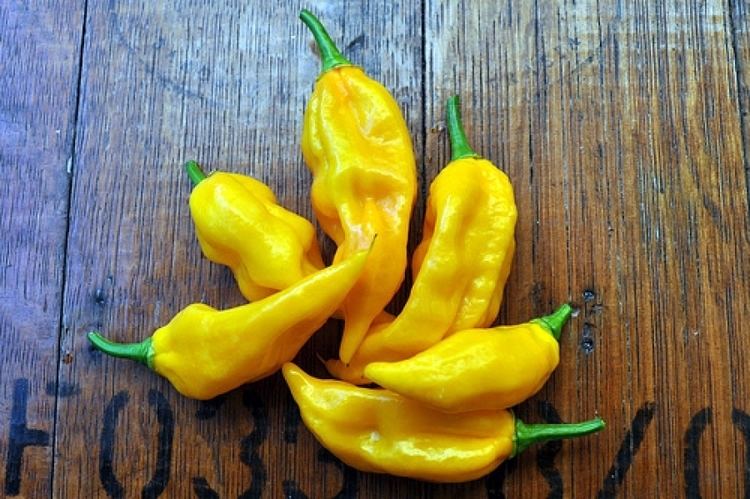
Originally from the Americas, like all chilli species, the specific variety known as Fatalii was 'discovered' and is thought to have developed in Central Africa. Since commerce between the Americas and Africa has spanned some four centuries or more, this is uncontroversial.
Cultivation

The plants typically grow 20 to 25 inches (51–64 cm) in height, but may reach 3 feet (0.91 m) or taller under optimal growing conditions, and plant distance should be about the same. The pendant pods get 2.5 to 3.5 inches (6.4–8.9 cm) long and about 0.75 to 1.5 inches (1.9–3.8 cm) wide. From a pale green, the most common variety matures to a bright yellow. Less common are red, chocolate and white Fataliis. The red version of Fatalii apparently has a somewhat different flavor and shorter, wider pods, maturing from medium green to dark red but the strain is unstable, throwing yellow and orange fruit. The white Fatalii tastes very like the standard yellow version, but lighter and more citrusy, and has similar heat, perhaps a fraction less.
Raw Chilli Taste
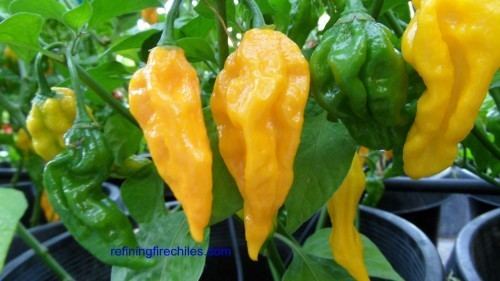
When eating a whole white chili and chewing for at least 10 seconds before swallowing (not recommended for untrained tasters) the heat may be first felt aggressively in the back of the throat, up the nose, then eventually moves to the roof of the mouth and finally the tongue where the pain is intense, at which point there can be gustatory sweating and tears from the eyes. Some tasters note the strong, fruity Fatalii flavour, which is quite distinct, as being almost identical to the yellow version. Others find it milder.
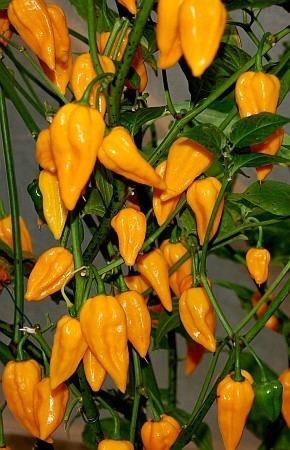
Hot chili aficionados who have tasted all four colour varieties report the heat increasing from the white, which has pronounced citrus lime and lemon flavours, through yellow, then red, then to the hottest and sweetest being the chocolate or brown Fatalii. The distinctive chinense (species) fruit flavour, also present in Habanero, becomes more prominent in the yellow than the white, and increases and becomes more rounded in the red and the chocolate. The effect of the chili heat also differs in the colour forms. White and yellow have more effect on the back of the throat and are slower to decline than the red and brown, which have more of a searing mouth burn, especially the tongue. The initial taste is of the fruit and sweetness, before the heat starts after about 30 seconds, peaking between two and five minutes when it declines. The heat decline of the red and chocolate falls more quickly than the white and yellow.
Culinary Use
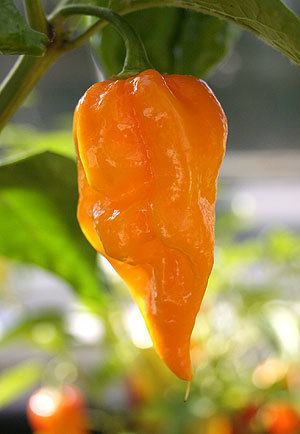
The Fatalii is known for its extreme heat and citrus flavor. It can be made into a hot sauce with other citrus flavors including lime and lemon. The heat can be reduced (extended) with oil and nuts. Variations of Fatalii hot sauces often include fruits including pineapple and mango. It can be used fresh diced to add heat and spice to marinades, dressings, barbeque sauces, salsa, and chutney. The Fatalli can be combined with fruit to make jelly and jam. Being thin-walled it is an ideal pepper for drying. It is reported to add a fruity flavor and spice when brewing beer.
